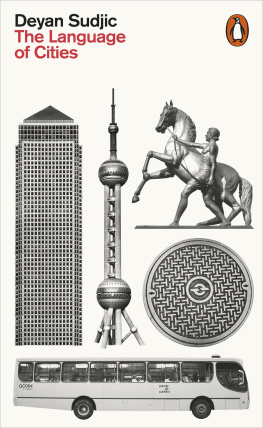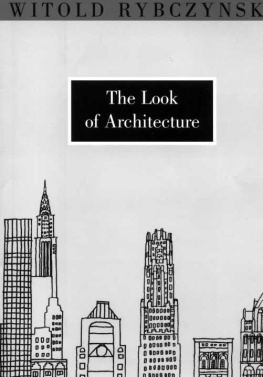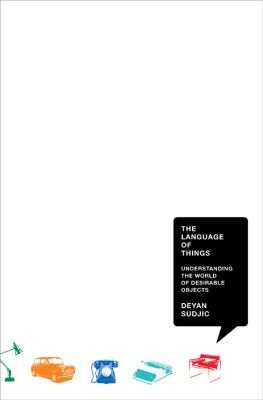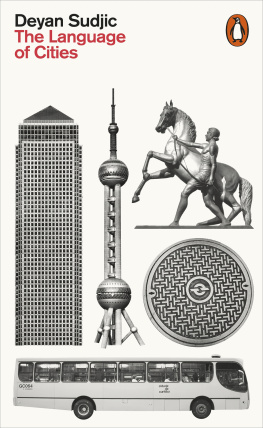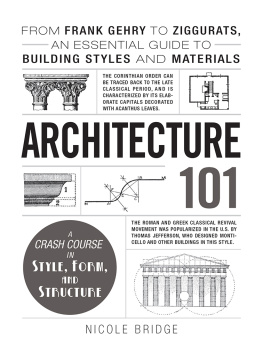PENGUIN BOOKS
THE EDIFICE COMPLEX
Essential reading for anyone who cares about the physical
world around them Independent
Ever wondered why totalinarianism and architectural excess go
hand in hand? This book details modern architectures frequent
collusion with the bad guys Wallpaper
A captivating trawl that take in both the politicians that
commissioned the buildings and the architects they employed
Arena
Part history, part anecdote, part polemic His acute eye and
ear for bombast, dishonesty, boastfulness and the meretricious
wherever it appears, results in a brutally honest description of
twentieth-century architects and the way in which, almost
invariably, their desire to build outweighs most other
considerations Architectural Review
Well written and entertaining Financial Times
Sudjic knows that architecture is not just a backdrop to our
lives. It matters, and he is able to tell us why, clearly and
vividly Spectator
Astonishing The conventional wisdom that despots and
their architects inhabit a hermetic milieu, that they are atypical
exceptions, is subtly overturned The Times
One of the best books on architecture of recent years
Daily Mail
ABOUT THE AUTHOR
Journalist and cultural commentator Deyan Sudjic has been fascinated by the relationship between people and buildings for many years. Born in London to Yugoslav parents, he graduated from the University of Edinburgh with a degree in architecture but, in order to save the world from more leaky and mediocre buildings, chose not to practice but to work instead as a writer, editor, curator and critic. He wrote for the Sunday Times and the Guardian before launching Blueprint magazine as its founding editor. Sudjic currently divides his time between London, where he is architecture critic for the Observer and a visiting professor at the Royal College of Art, and Milan, where until recently he edited Domus, the international magazine of art, architecture and design.
Deyan Sudjic was also Director of the Venice Architecture Biennale in 2002 and spent four years in Glasgow as the Director of its year as the UK City of Architecture and Design (an achievement that earned him an OBE), and has curated exhibitions at the British Museum (on Norman Foster) and at the McLellan Galleries (on architecture and democracy) as well as shows at the ICA and the Royal Academy. He is the author of the much-praised 100-Miles City, the best-selling Architecture Park, and monographs on John Pawson, Ron Arad and Richard Rogers.
DEYAN SUDJIC
The Edifice Complex
How the Rich and Powerful Shape the World

PENGUIN BOOKS
PENGUIN BOOKS
Published by the Penguin Group
Penguin Books Ltd, 80 Strand, London WC2R 0RL, England
Penguin Group (USA) Inc., 375 Hudson Street, New York, New York 10014, USA
Penguin Group (Canada), 90 Eglinton Avenue East, Suite 700, Toronto, Ontario, Canada M4P 2Y3
(a division of Pearson Penguin Canada Inc.)
Penguin Ireland, 25 St Stephens Green, Dublin 2, Ireland
(a division of Penguin Books Ltd)
Penguin Group (Australia), 250 Camberwell Road, Camberwell, Victoria 3124, Australia
(a division of Pearson Australia Group Pty Ltd)
Penguin Books India Pvt Ltd, 11 Community Centre, Panchsheel Park, New Delhi 110 017, India
Penguin Group (NZ), cnr Airborne and Rosedale Roads, Albany, Auckland 1310, New Zealand
(a division of Pearson New Zealand Ltd)
Penguin Books (South Africa) (Pty) Ltd, 24 Sturdee Avenue, Rosebank, Johannesburg 2196, South Africa
Penguin Books Ltd, Registered Offices: 80 Strand, London WC2R 0RL, England
www.penguin.com
First published by Allen Lane 2005
Published in Penguin Books 2006
Copyright Deyan Sudjic, 2005
All rights reserved
The moral right of the author has been asserted
Except in the United States of America, this book is sold subject
to the condition that it shall not, by way of trade or otherwise, be lent,
re-sold, hired out, or otherwise circulated without the publishers
prior consent in any form of binding or cover other than that in
which it is published and without a similar condition including this
condition being imposed on the subsequent purchaser
EISBN: 9780141900933
Contents
Acknowledgements
The author would like to thank, for their varied help, advice and encouragement, Steve Featherstone of Llewelyn-Davies, Peter Murray of Wordsearch, Zhang Xin and Yang Ho Chang, Alex Linklater, Claire Paterson of Janklow and Nesbitt, Charles Jencks, Stefan McGrath and Will Goodlad at Penguin, Jane Ferguson of the Observer, and The Research Library, The Getty Research Institute Los Angeles (980060), for permission to quote from the letters of Philip Johnson; and, in their different ways, Sarah Miller and Olivia Sudjic.
1
Why We Build
I used to keep a photograph torn from a tabloid pinned up over my desk. Through the blotchy newsprint you could make out the blurred image of an architectural model the size of a small car, jacked up to eye level. Left to themselves architects use non-committal shades of grey for their models, but this one was painted in glossy lipstick colours, suggesting it was made to impress a client with an attention span shorter than most.
Strips of cardboard and balsa wood stood in for a mosque with a squat dome fenced in by concentric circles of spiky minarets. The gaudy shapes, and the reduction of an intricate decorative tradition to a cartoon, not much different from a hundred other attempts at having it both ways, tried and failed to be simultaneously boldly modern and respectfully rooted in the past. The questionable architectural details werent what made it such an unsettling image. What really grabbed my attention was the glimpse of the darker aspects of building that the picture captured. None of the uniformed figures clustered respectfully around the model looked like architects, who usually feature conspicuously in this kind of picture; but there wasnt much doubt about the identity of the thickset man with the heavy moustache, looking disorientatingly like a World War Two British army major in his vintage khaki sweater and beret, or the unblinking fascination with which he was gazing so adoringly at his model.
Saddam Hussein, like many authoritarians, was an enthusiastic patron of architecture. Unlike Napoleon III, however, whose fastidious tastes are still clearly visible in the parade-ground tidiness of the boulevards of Paris, or Mussolini with his contradictory passions for modernism and Caesar Augustus, Hussein had no obvious preference for any specific architectural style. He did, however, have an instinctive grasp of how to use architecture to glorify himself and his regime and to intimidate his opponents.
From the moment of its conception, the Mother of all Battles mosque had a very clear purpose: to claim the first Gulf War as a victory for Iraq. Hussein was humiliated in that war. His army was expelled from Kuwait. Its desperate flight home left the highway disfigured by the grotesque train of incinerated Iraqi conscripts, trapped in their burnt-out plundered cars, the roadside strewn with loot. Hussein wanted to build his own reality to try and wipe out that image of defeat just as the Kuwaitis used their meaningless toy parliament, designed by Jorn Utzon, architect of the Sydney Opera House no less, to suggest that they were a Scandinavian democracy rather than a Gulf oligarchy. Building anything at all while Iraq struggled with the deprivations brought about by Husseins manipulation of United Nations sanctions was a calculated gesture of defiance. And the mosque itself came loaded with an iconography that made this defiance all the more explicit.
Next page

